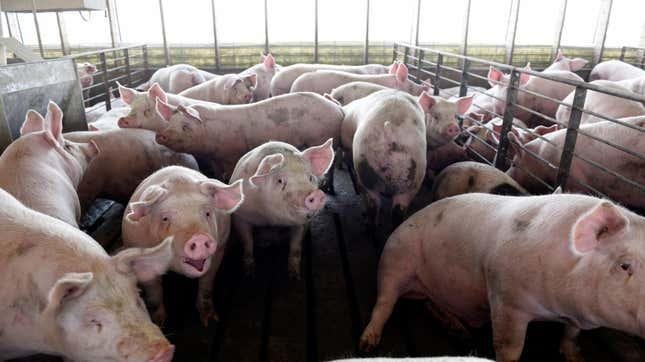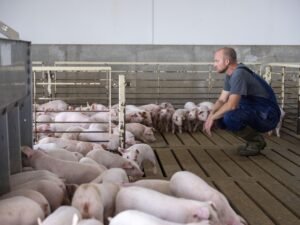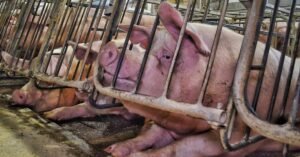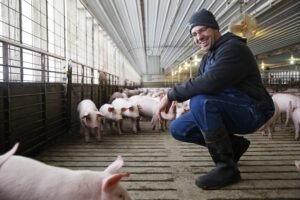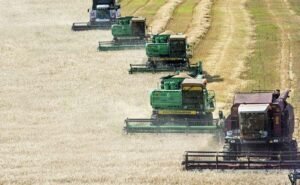American pork producers, rarely ones for flamboyant public statements, are currently navigating unfamiliar territory—a legislative wind shifting in their favor yet heavily laden with peculiar uncertainties. As a significant bill clears the House with measures fortifying main street businesses and enhancing the country’s global agricultural standing, a crucial aspect remains for those whose livelihoods depend upon swine: how sustainable is this freshly brewed optimism among industry operators?
Recent years presented formidable hurdles. Producers faced a swift decline in margins—with average losses registering near $30 per head—marking what many describe as an era of protracted financial adversity. Now, as costs recede marginally and pig values regain at least partial ground to pre-pandemic rates, there emerges an odd mixture: cautious hope alongside residual anxiety about full economic recuperation. It’s almost as if they see sunlight after weeks under endless drizzle, but still wear galoshes—just in case.
The National Pork Producers Council (NPPC), carrying considerable weight despite not always being headline darlings like larger commodity organizations, laid out three central priorities before Congress regarding the next five-year farm bill. Among these:
- Securing reauthorization for Livestock Mandatory Reporting. Accurate market data isn’t merely a formality; it’s bloodwork indispensable for price determination and risk navigation.
- Pushing expansion of H-2A visa provisions to include year-round labor arrivals—not just seasonal employees is absolutely integral given that modern farrow-to-finish operations are relentless cycles without strict off-seasons.
- And then there’s a less-publicized matter of defending science-based veterinary decisions against state-by-state regulatory patchworks that could entangle herds or make health protocols resemble cutthroat cooking contests more than objectively guided medicine.
Policy has not been confined to rhetoric; 2024 saw tangible triumphs such as new trade agreements, stiffer defense against intervention in routine veterinary care practices, plus broader initiatives designed to codify producers’ rights to operate within established frameworks rather than under constantly shifting guidelines decided from afar. The NPPC doesn’t shout—its advocacy materializes behind scenes where so much vital momentum gathers.
Yet while significant advances echo around state fairs and quarterly association meetings alike—and veteran pork advocates get quietly inducted into sector Halls of Fame—the everyday operator senses something more nuanced lurking beneath headlines about legislative victories or record-breaking export numbers: volatility hasn’t exactly died down.
Sometimes advocacy progress unfurls unpredictably. For example: recent tariffs imposed on select vitamins essential for optimal swine productivity have generated short-term celebration by discouraging certain foreign competitors, yet these moves simultaneously spark murmurs inside nutritionist circles about ingredient cost fluctuations next quarter—a diplomatic balancing act worthy of any high-wire performer.
It would be reasonable here to mention how domestic supply chain bottlenecks oddly interact with global events unrelated at first glance—climate disruption or monetary policy shifts half a world away can suddenly disrupt feed ingredient imports right when local processors were anticipating bumper grain harvests. From Des Moines all the way through Smithfield hamlets that dot rural North Carolina landscapes like scattered dominoes (a phrase seldom found outside eccentric travelogues), unexpected topic jumps occur during producer roundtables—a fact now mirrored even among Congressional staff catching up on “real-life ag” via webinars hosted by county extension agents.
Cultural references do worm their way into conversations more often than one might expect (“not my first rodeo” carries actual professional weight if you’re discussing livestock futures contracts over burnt coffee). Policy makers sometimes fail—even after years observing committee hearings—to anticipate subtleties embedded deeply within husbandry traditions spanning generations. For instance, experts debate whether maintaining voluntary animal welfare certification schemes creates authentic trust among consumers versus inadvertently fueling competitive infighting…though every few months this particular argument feels cyclically reheated rather than definitively solved.
During one pivotal hearing earlier this spring—the sort where small town patience interlaces with stern demands—you could’ve caught NPPC President Lori Stevermer expressing both gratitude and exasperation at external commentators pontificating on producer resilience without walking muddy barn floors themselves. Her testimony seemed decisive until midway through she reframed fiscal optimism slightly less confidently amidst persistent operational strains no spreadsheet conveniently quantifies.
While policymakers trumpet bills supporting national interests writ large (“One Big Beautiful Bill”), local farm operators scrutinize line items concerning manure management grants or digital infrastructure upgrades for traceability compliance platforms—not topics likely featured above-the-fold but possessing outsized practical resonance nonetheless.
All told? Industry momentum glides forward but never strictly linear fashion—certain things improve swiftly while others lag listlessly behind bureaucratic hedgerows; optimistic mood tempers itself through patchy recollections of markets behaving strangely last winter when new labeling guidelines briefly sparked confusion across packing plants already running thin crews thanks to labor shortages unresolved since before anyone had heard phrases like “pandemic-driven pork surplus.”
Still waters might run deep—or they may simply hide snags underneath placid surfaces familiar only if you’ve anchored often enough along uncertain legislative shores waiting out passing storms both literal and figurative. The future remains unwritten; its contours shaped by congressional penmanship one month and sudden market corrections the next—pork producers step cautiously forward even when victory parades gather dust inside committee rooms brimming with anticipation rather than closure just yet.

